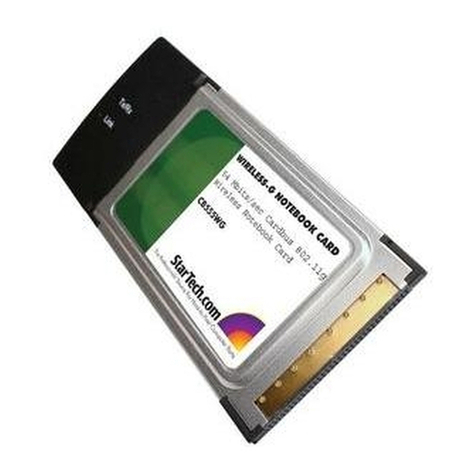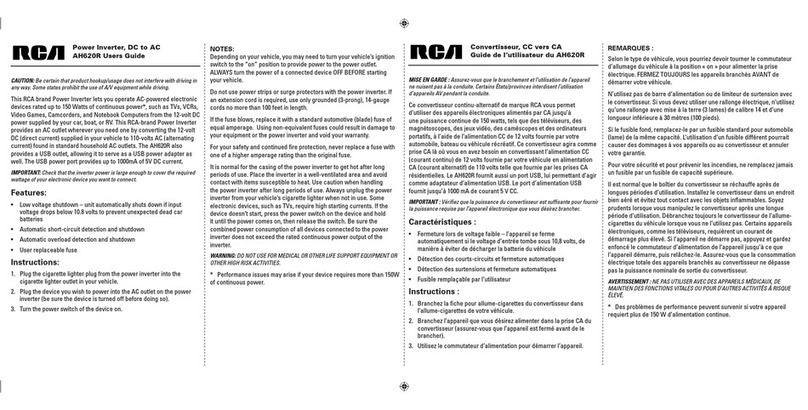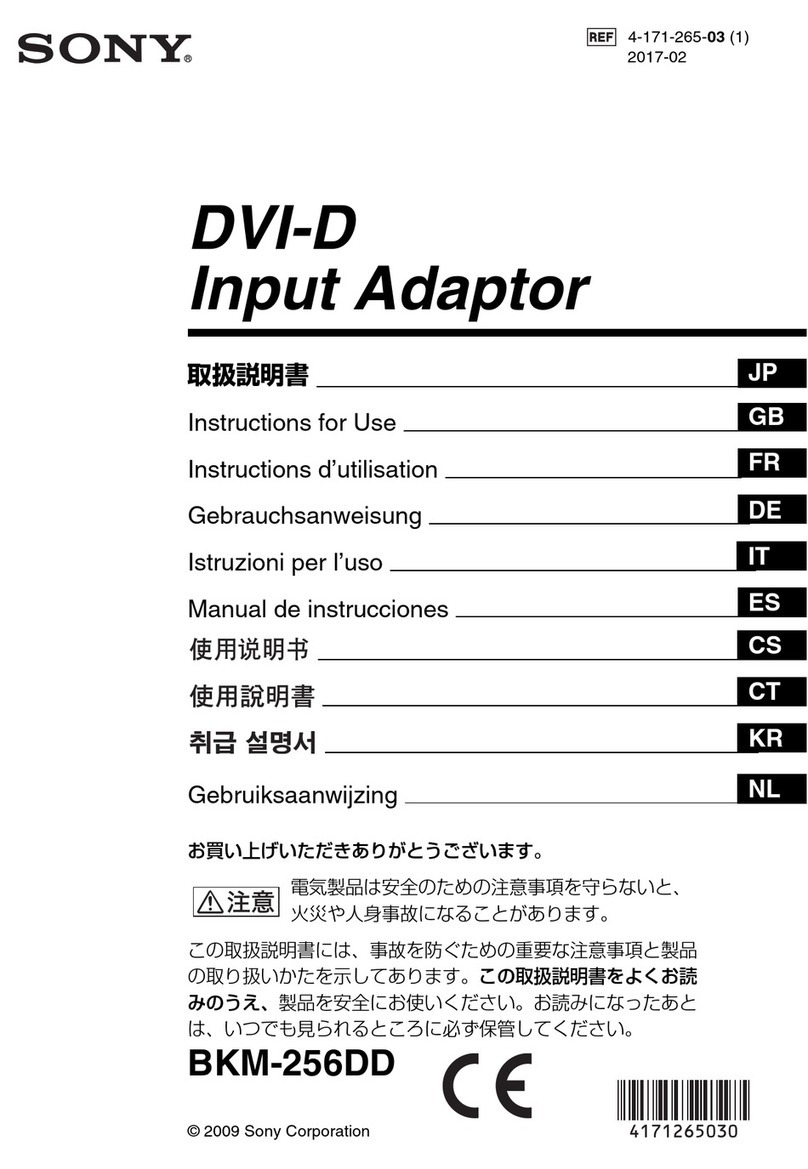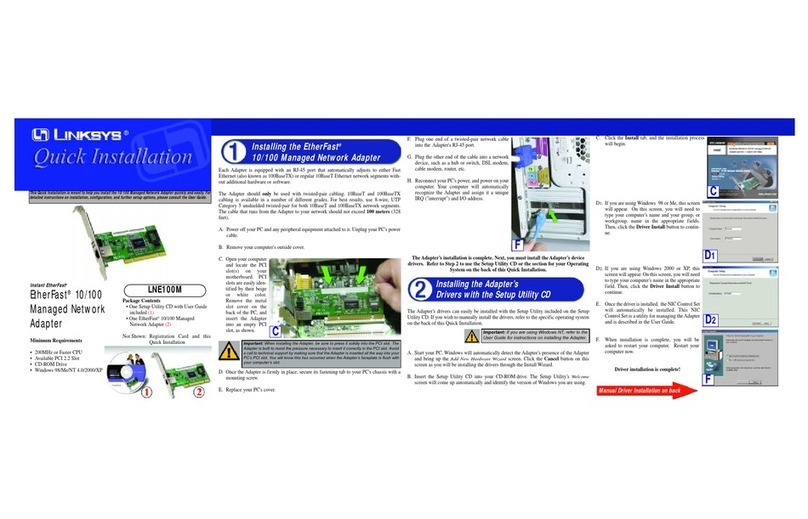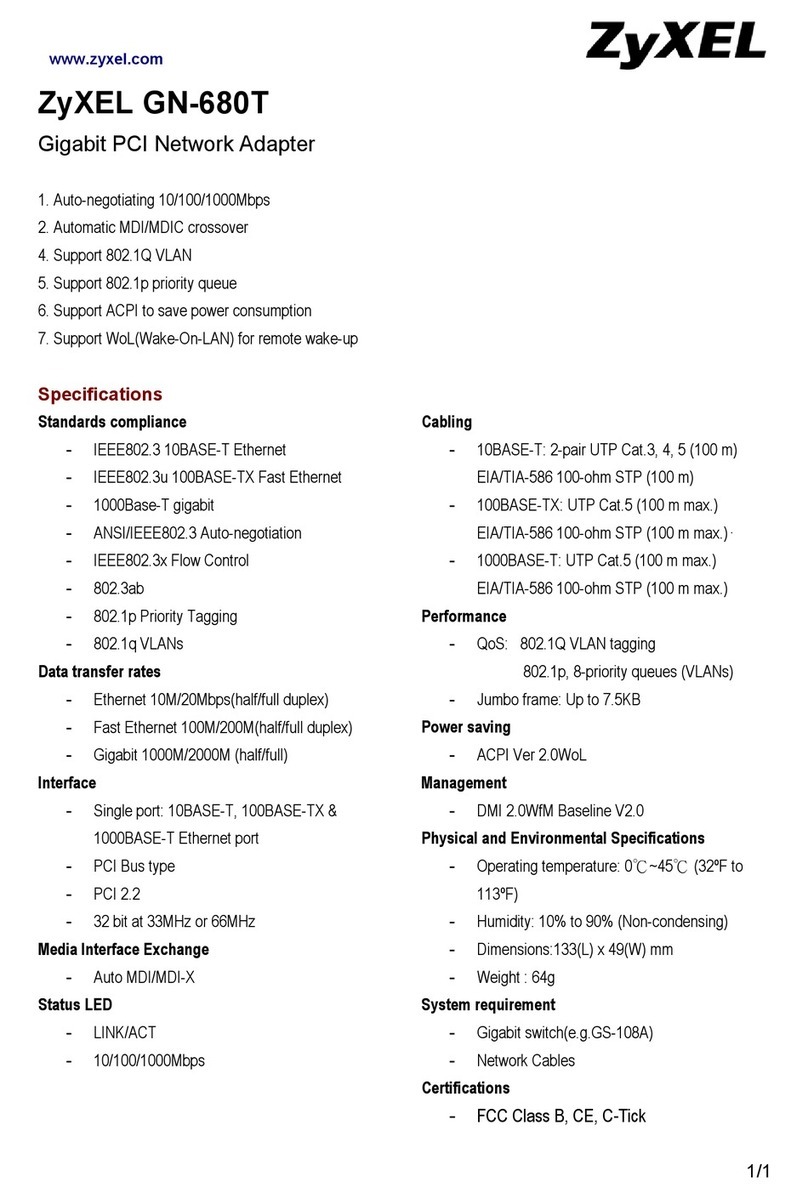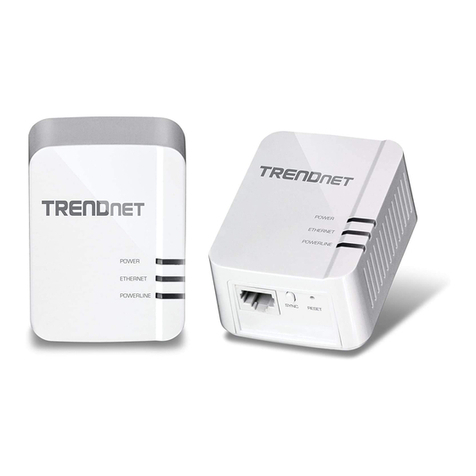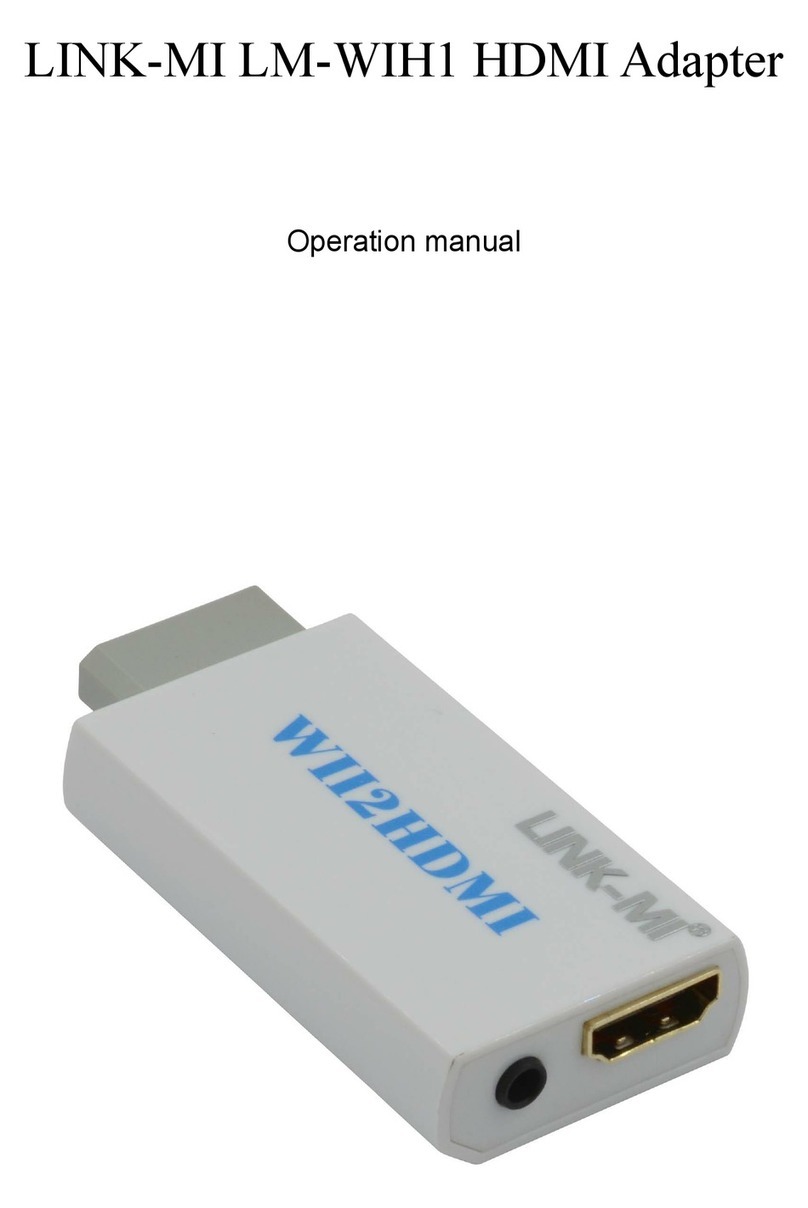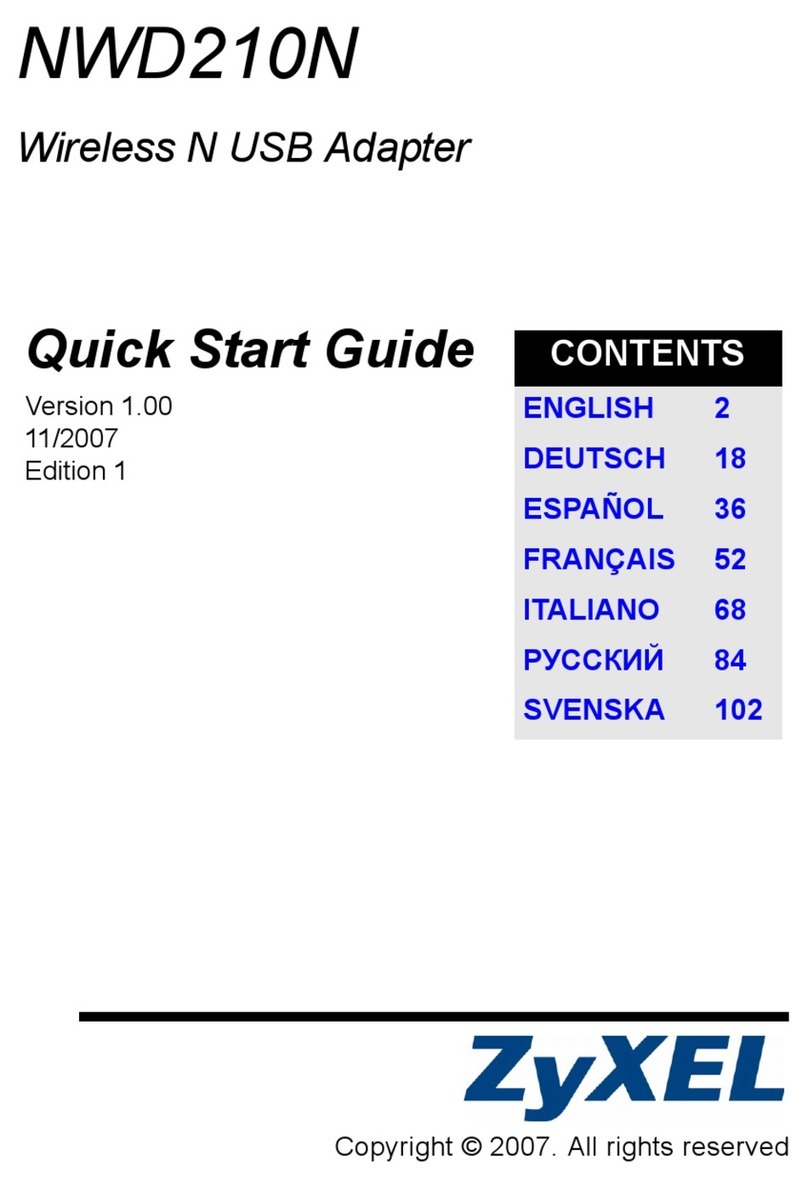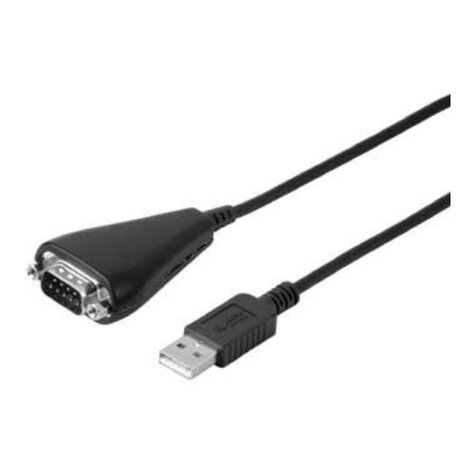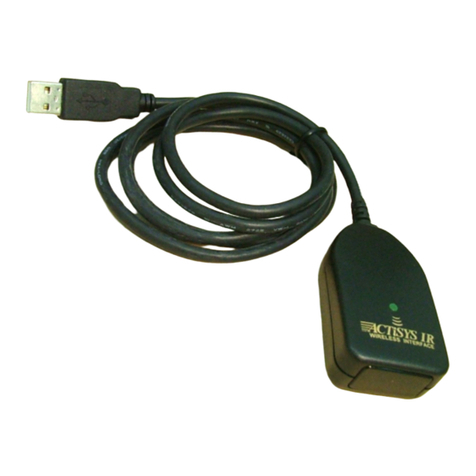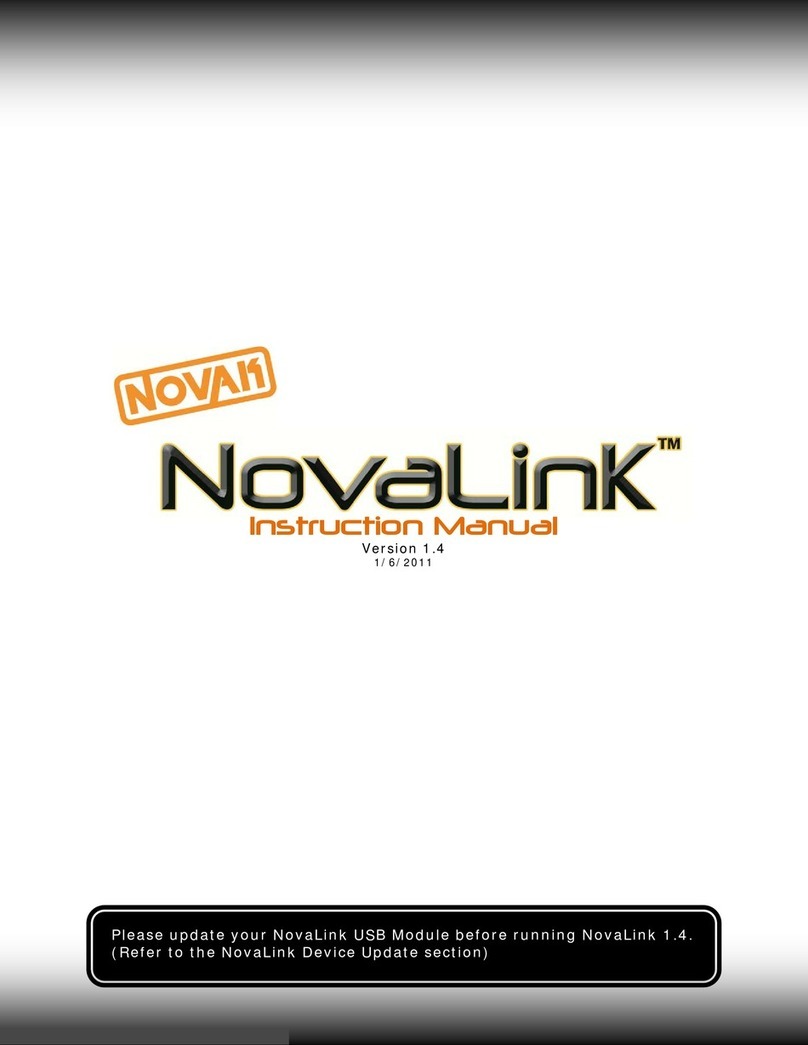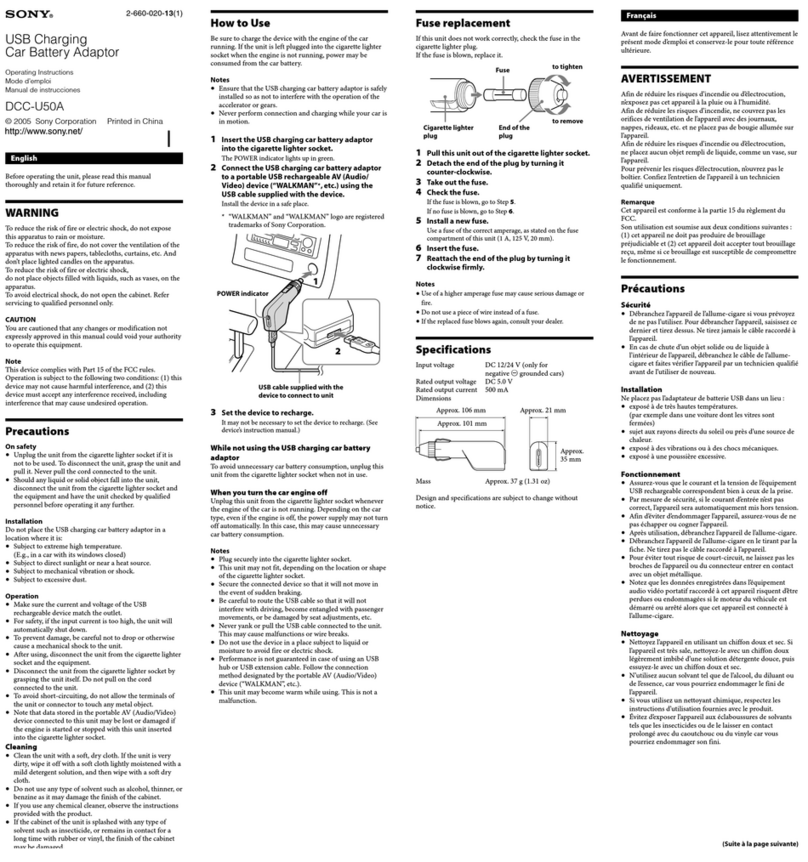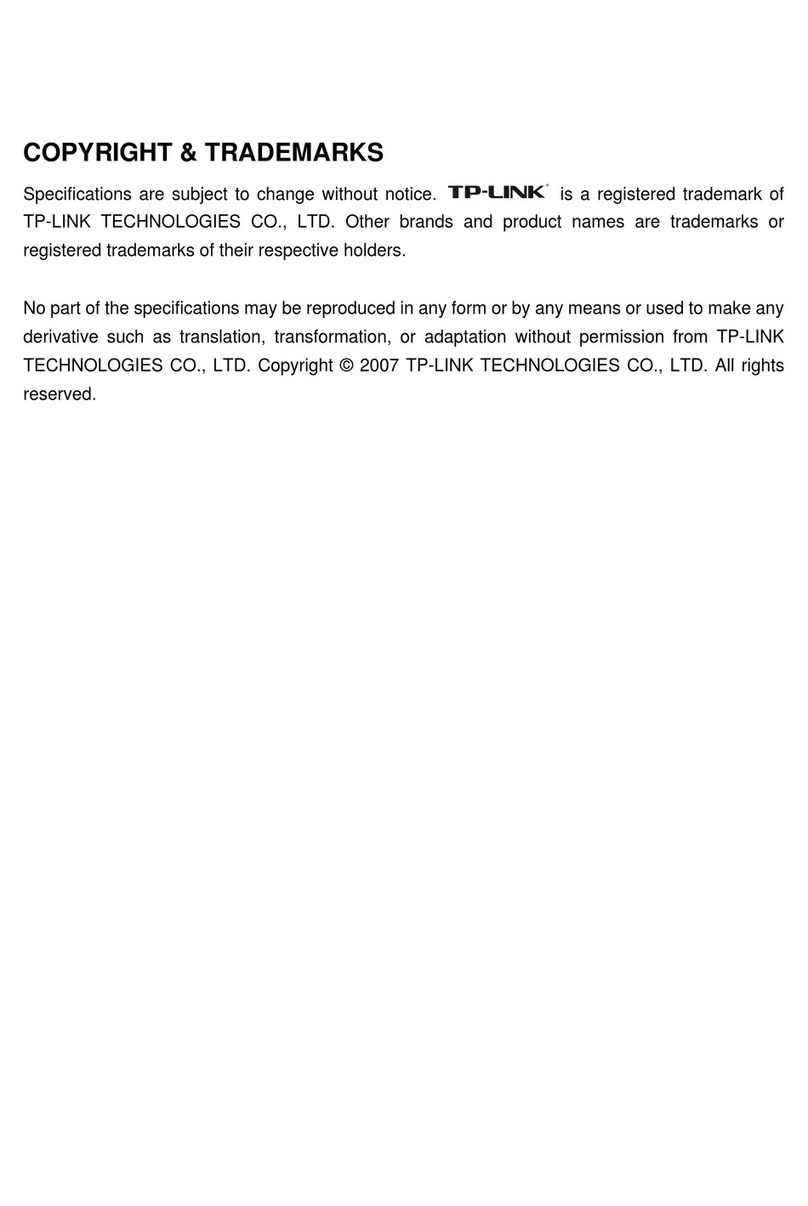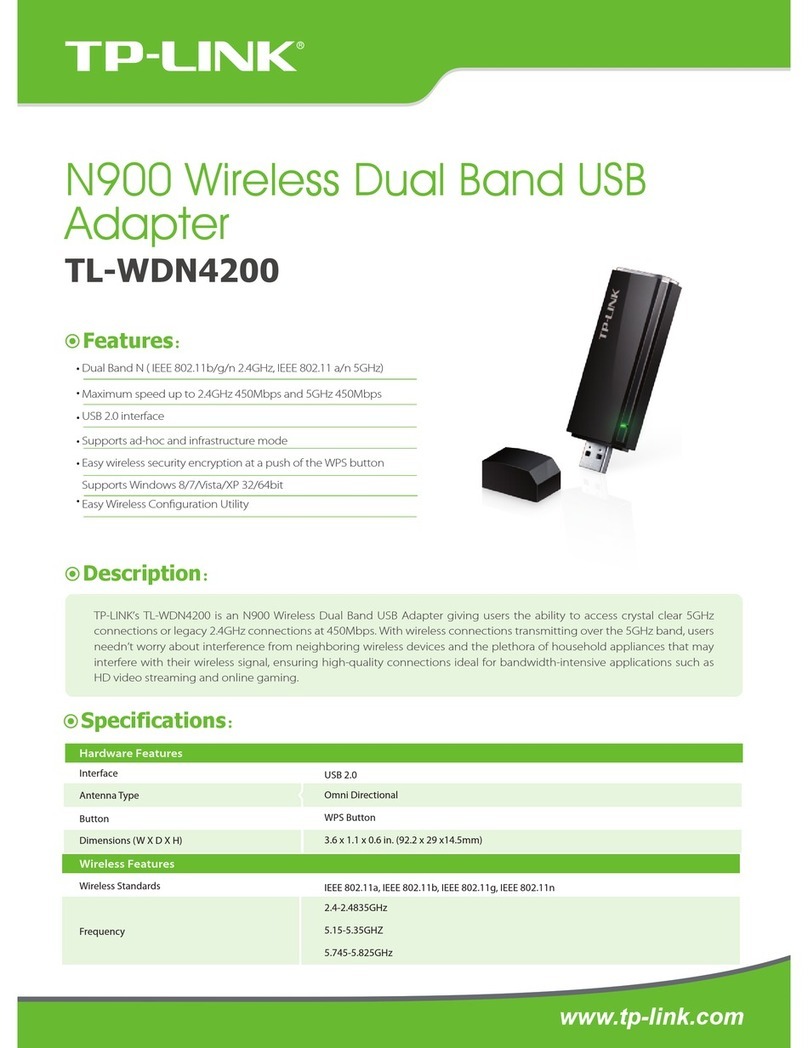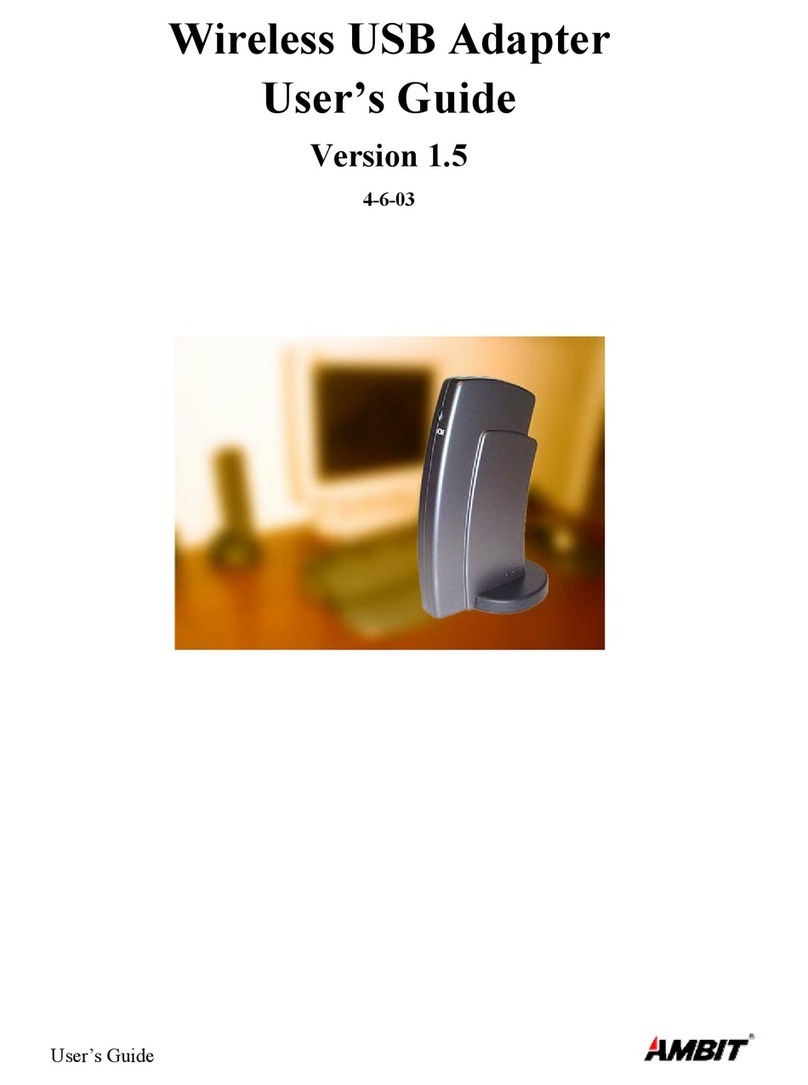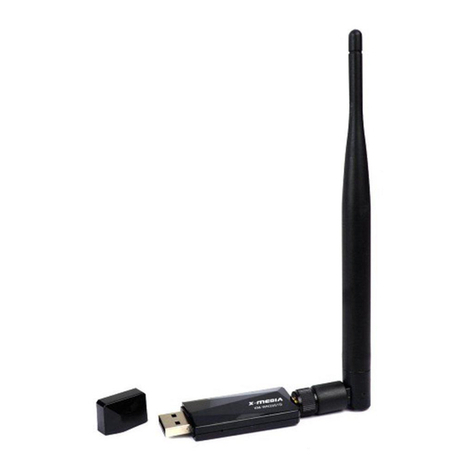Avidyne DC50 User manual

DC50 Datalink Coupler
Installation Manual
P/N 600-00082-000
Rev 04
Avidyne Corporation
55 Old Bedford Road
Lincoln, MA 01773
www.avidyne.com

Avidyne DC50 Datalink Coupler Installation Manual Page i
P/N 600-00082-000 Rev 04
REVISION RECORD
Documentation Part Number: 600-00082-000
Date
Revision No.
Description
11/8/02
00
Release Per ECO 02-305
11/18/02
01
Change Per ECO 02-322
12/16/02
02
Change Per ECO 02-361
3/14/03
03
Change Per ECO 03-084
05/15/04
04
Change Per ECO-04-081

Avidyne DC50 Datalink Coupler Installation Manual Page ii
P/N 600-00082-000 Rev 04
Table Of Contents
1General Information............................................... 1
1.1 Introduction............................................................................ 1
1.2 Equipment Description.......................................................... 1
1.3 Technical Specification ......................................................... 2
2Installation Instructions ........................................ 3
2.1 General Information .............................................................. 3
2.2 Unpacking and Inspection..................................................... 3
2.3 Coupler Installation Requirements........................................ 4
2.4 Other Installation Considerations.......................................... 5
2.5 Electrical Interfaces............................................................... 5
2.6 Electrical Load Worksheet .................................................... 6
2.6.1 Coupler Electrical Load......................................................... 6
2.6.2 Electrical Load Considerations.............................................. 6
2.6.3 Electrical Load Worksheet .................................................... 7
2.7 RF Interfaces......................................................................... 8
2.8 Positioning and Mounting the Coupler.................................. 8
2.9 Weight and Balance.............................................................. 8
3Installation Procedure ........................................... 9
3.1 Coupler Wiring and Installation............................................. 9
4Post Installation System Checkout.................... 11
4.1 EMI Check........................................................................... 11
5Factory Service Policies...................................... 12
5.1 Technical Support ............................................................... 12
5.2 General Service Procedures............................................... 12
6Antenna Coupler Interconnect............................ 13
7Environmental Qualification Form ..................... 14
8DC50 STC 17
9Coupler Dimensions............................................ 18

Avidyne DC50 Datalink Coupler Installation Manual Page 1
P/N 600-00082-000 Rev 04
1 General Information
1.1 Introduction
This manual contains information about the physical, mechanical and
electrical characteristics of the Avidyne DC50 Datalink Coupler, and
provides installation instructions for this unit. Follow the installation
instructions carefully to obtain maximum performance from the Antenna
Coupler.
The installation manual applies to Avidyne 700-00015-XXX-().
The conditions and tests required for TSO approval of this article are
minimum performance standards. It is the responsibility of those
installing this article either on or within a specific type or class of aircraft
to determine that the aircraft installation conditions are within the TSO
standards. TSO articles must have separate approval for installation in
aircraft. The article may be installed only if performed under 14 CFR Part
43 or the applicable airworthiness requirements.
1.2 Equipment Description
The Datalink Coupler is a Radio Frequency (RF) device that allows two
transceivers (a VHF communications radio and a datalink radio) to share
a single wide-band VHF antenna. The coupler contains filters that allow
the signals intended for the comm to reach the VHF comm port, while
routing the ORBCOMM datalink frequencies to the ORBCOMM datalink
port.

Avidyne DC50 Datalink Coupler Installation Manual Page 2
P/N 600-00082-000 Rev 04
1.3 Technical Specification
DC50 Datalink Coupler 700-00015-XXX-()
Specifications
Description/Requirement
Physical Characteristics
Weight
.65 pounds
Height
1.1 +/- 0.1 inches
Width
5.6 +/- 0.1 inches
Depth
5.1 +/- 0.1 inches
Electrical Requirements
Voltage
+14 VDC Nominal (700-00015-001)
+28 VDC Nominal (700-00015-000)
Current
110 A intermittent at 14 VDC, 0.055A
continuous at 14 VDC
110 A intermittent at 28 VDC, 0.055A
continuous at 28 VDC
Cooling Requirements
No cooling is necessary.
Operating Limits
See Appendix B –Environmental Qualification Forms
TSO’s
TSO-C37d, TSO-C38d
Environmental
DO-160D

Avidyne DC50 Datalink Coupler Installation Manual Page 3
P/N 600-00082-000 Rev 04
2 Installation Instructions
2.1 General Information
This section contains information for installing and wiring the datalink
coupler. All installation procedures should follow the acceptable
practices, methods, and techniques of avionics installations as described
in FAA Advisory Circulars.
2.2 Unpacking and Inspection
The shipping carton of the DC50 contains one set of the following
components and parts:
Part Number
Description
700-00015-000
Datalink Coupler
600-00082-000
Datalink Coupler Installation Manual
850-00017-000
Installation Kit, Datalink Coupler
OR
Part Number
Description
700-00015-001
Datalink Coupler
600-00082-000
Datalink Coupler Installation Manual
850-00017-000
Installation Kit, Datalink Coupler
Make sure that all the parts listed above were received and sustained no
shipping damage. If there is evidence of shipping damage, save the
shipping carton and packaging material to help substantiate your claim to
the shipping company. Retain the original shipping carton and packing
material in case you need to ship the unit for service.

Avidyne DC50 Datalink Coupler Installation Manual Page 4
P/N 600-00082-000 Rev 04
2.3 Coupler Installation Requirements
For the antenna coupler to function correctly when connected to an
ORBCOMM datalink transceiver and a comm transceiver it must be
connected to a top mounted antenna capable of transmitting and
receiving both communications frequencies and datalink frequencies.
The VHF comm operates from 118 MHz to 136.975 MHz, and the
ORBCOMM transceiver transmits from 148 MHz to 150.05 MHz and
receives at 137 MHz to 138 MHz. This installation manual does not
contain approves data for antenna installations on specific aircraft types.
Low loss coaxial cable (RG400 or equivalent) must be used for all RF
connections. Coax cable is to be double shielded, have a loss of less
than 4.5 dB per 100 ft at 100 MHz and have a center-stranded
conductor.
The datalink function cannot operate when the VHF communications
radio is transmitting. Therefore, if there are two comms installed, the
coupler should be connected to the secondary comm. This configuration
will allow for best datalink operation.
Two different couplers are available:
-000 for 28 VDC Aircraft
-001 for 14 VDC Aircraft
Consult your pilots operating handbook to determine the aircraft system
voltage.
The Coupler must be powered from the same circuit breaker as the VHF
comm that is connected to it. This ensures that the coupler will never be
powered off while the comm transmits. If this were to happen it could
damage the Coupler.
The Coupler must be connected to the same PTT discrete as the comm
connected to it (usually the PTT switch is connected to an audio control
panel that in turn routes PTT to the selected VHF comm). Transmitting
into the coupler with the PTT discrete ungrounded could damage the
coupler.
CAUTION:
IF ANY OF THE REQUIREMENTS ABOVE ARE NOT ADHERED
TO, THE COUPLER MAY NOT FUNCTION CORRECTLY AND
MAY BE DAMAGED.

Avidyne DC50 Datalink Coupler Installation Manual Page 5
P/N 600-00082-000 Rev 04
2.4 Other Installation Considerations
Prior to installing the antenna coupler, you should carefully assess the
location where the coupler will be mounted, specifically considering the
external connections to the coupler.
Prior to starting the installation, you should develop an installation
strategy by carefully reviewing all installation instructions, including
mechanical and electrical instructions.
Use appropriate appendices for guidance with antenna coupler
dimensions.
Installations not identified in applicable STC’s may require additional
substantiation.
The antenna coupler is held in place by four screws. Refer to Appendix
C.
A positive ground path must be established between the datalink coupler
chassis and airframe ground less than 0.5 ohms.
2.5 Electrical Interfaces
Power to the datalink coupler is derived directly from the aircraft. The
coupler must be connected to the same circuit breaker as the comm it is
connected to. The coupler does not have an on/off switch. Refer to
Appendix A, Datalink Coupler Interconnect. Power, Ground and PTT are
all connected through the 9-pin male D shell connector available at the
front of the coupler.

Avidyne DC50 Datalink Coupler Installation Manual Page 6
P/N 600-00082-000 Rev 04
2.6 Electrical Load Worksheet
2.6.1 Coupler Electrical Load
The Avidyne Coupler has the following power consumption at 28 VDC
(700-00015-000):
Operating
Mode
Electrical Load
Duty Cycle
Transmit
0.110 amps at 28VDC
Intermittent
Receive
0.055 amps at 28 VDC
Continuous
The Avidyne Coupler has the following power consumption at 14 VDC
(700-00015-001):
Operating
Mode
Electrical Load
Duty Cycle
Transmit
0.110 amps at 14 VDC
Intermittent
Receive
0.055 amps at 14 VDC
Continuous
2.6.2 Electrical Load Considerations
The Avidyne coupler will be connected to the airplane electrical power
system on the same circuit breaker as the associated VHF comm
transceiver and should be wired to carry the full load of the circuit
breaker. The coupler may be damaged if the VHF comm system
attempts to transmit without power applied to the coupler. Connecting
the coupler to the VHF comm circuit breaker ensures that the two units
will be powered at the same time.

Avidyne DC50 Datalink Coupler Installation Manual Page 7
P/N 600-00082-000 Rev 04
2.6.3 Electrical Load Worksheet
Both the VHF comm transceiver and the coupler consume more power in
transmit mode than in receive mode. For the airplane installation,
identify the VHF comm equipment to which the coupler will be
connected.
1) Review the specifications for the VHF comm transceiver to
determine the power consumption in both transmit mode
(intermittent operation) and receive mode (continuous
operation).
2) Add the power consumption for the coupler in each mode.
3) Review the circuit breaker and electrical wiring ratings for the
combined electrical load to ensure that the installation
complies with the guidance of Advisory Circular 43.13-1B,
Chapter 11.
Operating
Mode
700-00015-000
Transmit Mode
(Intermittent)
700-00015-000
Receive Mode
(Continuous)
VHF comm
Coupler
0.110 amps at 28V DC
0.055 amps at 28 VDC
Total
Operating
Mode
700-00015-001
Transmit Mode
(Intermittent)
700-00015-001
Receive Mode
(Continuous)
VHF comm
Coupler
0.110 amps at 14 VDC
0.055 amps at 14 VDC
Total

Avidyne DC50 Datalink Coupler Installation Manual Page 8
P/N 600-00082-000 Rev 04
2.7 RF Interfaces
The coupler has three Female BNC connectors mounted on the front
face. These connectors allow the VHF comm radio and the datalink radio
to connect to the top mounted aircraft antenna. For connector locations,
refer to Appendix C.
2.8 Positioning and Mounting the Coupler
The coupler should be mounted close to the rear of the VHF comm radio
it will be connected to, and close to the datalink transceiver. The cable
used to connect the VHF comm and the datalink transceiver should be
as short as practical, to minimize the loss found in long cable lengths,
and must be constructed of RG-400 or equivalent cable.
2.9 Weight and Balance
Weight and balance computation is required after the installation of the
DC50 Datalink Coupler. Follow the guidelines as established in AC43.13-
1B, Chapter 10, Section 2. Make appropriate entries in the equipment list
indicating items added, removed or relocated along with the date
accomplished. Include your name and certificate number in the aircraft
records. DC50 Datalink Coupler weight is identified in the technical
specification section as 0.65 lbs.

Avidyne DC50 Datalink Coupler Installation Manual Page 9
P/N 600-00082-000 Rev 04
3 Installation Procedure
3.1 Coupler Wiring and Installation
This installation procedure assumes the datalink transceiver has been
installed. If the datalink transceiver has not been installed, and the
coupler is being installed for datalink provisions, install the 50 Ohm
Termination, Minicircuits BTRM-50, shipped in the install kit as described
in step 8.
The following hardware is recommended to complete the installation.
Ref.
Des.
Vendor
Part
Number
Description
P1
Positronic
SD9F10G00
9 Pin Female D Shell
Connector
J1
Pasternack
PE4044
Right Angle BNC Dual Crimp
Connector (RG400)
J3
Pasternack
PE4044
Right Angle BNC Dual Crimp
Connector (RG400)
J5
Pasternack
PE4044
Right Angle BNC Dual Crimp
Connector (RG400)
All installation and modifications accomplished should be compliant with
AC 43.13–1B and –2A.
1. Ensure power is removed from all applicable avionics. (Turn off
avionics master and aircraft master switches.)
2. Remove the VHF radio that will be connected to the coupler, and
disconnect the antenna cable and the connector supplying power
and Push-to-Talk (PTT).
3. Connect Pin 1 on connector P1 of the coupler to the circuit
breaker for the comm, or spliced into the comm power circuit
connected to that breaker. The wire gauge should be sized to
carry the full load of the circuit breaker.
4. Connect Pin 8 on connector P1 of the coupler to suitable aircraft
ground.
5. Connect Pin 5 on Connector P1 of the coupler to the PTT
discrete of the interfacing comm, which may be connected

Avidyne DC50 Datalink Coupler Installation Manual Page 10
P/N 600-00082-000 Rev 04
through an audio panel. (This discrete must be grounded only
when that comm is to transmit.)
6. Complete the connections to the 9-pin D shell connector that
connects to P1, installing the backshell and the hardware to
fasten the 9-pin D shell connector to the coupler.
7. Connect the comm antenna coax to the BNC connection on the
coupler labeled J5 VHF comm in Appendix A.
8. Connect the datalink transceivers antenna coax to the BNC
connector on the coupler labeled J3 Datalink. See Appendix A.
If the datalink transceiver will be installed later, connect the 50
ohm termination to the datalink BNC J3 on the coupler.
9. Connect the Antenna port of the coupler labeled J1 Antenna (see
Appendix A) to the coax from the top mounted VHF/Datalink
antenna.
10. Reinstall the VHF comm.

Avidyne DC50 Datalink Coupler Installation Manual Page 11
P/N 600-00082-000 Rev 04
4 Post Installation System Checkout
4.1 EMI Check
Verify that no interference is noted through the use of comm and the
datalink on other systems in the aircraft. The operation of these systems,
with the coupler installed, should not result in erroneous data displayed
by navigation systems.
1. Turn off power to comm control head.
2. Power on the avionics master.
3. If applicable, turn power on to audio control panel and make sure
the comm is selected.
4. Check the coupler pins P1-1 for +28V and P1-8 for Airframe
ground with volt meter or for 700-00015-000, or +14 VDC at pin
P1-1 for 700-00015-001.
5. Check for correct operation of PTT of the comm connected to the
coupler, with an ohm meter at the coupler connector P1-5.
6. Power on comm.
7. Verify operation of the datalink, according to the datalink
installation manual.
8. Conduct a radio check by transmitting and receiving via the
comm.
9. Re-verify operation of the datalink according to the datalink
installation manual.

Avidyne DC50 Datalink Coupler Installation Manual Page 12
P/N 600-00082-000 Rev 04
5 Factory Service Policies
5.1 Technical Support
Avidyne’s web site contains information that may assist the operator and
installer with questions or problems with their DC50 Datalink Coupler.
www.avidyne.com
Technical support questions may be submitted, 24 hours a day, via the
following:
Fax: 781-402-7599
Voice: 888-723-7592
An Avidyne Technical Support Representative will respond as soon as
possible. Avidyne business hours are 8:00 AM to 5:00 PM Eastern
Standard Time, Monday through Friday.
Please include the part number, revision number and serial number of
the unit in all correspondences. For problem reporting, please provide as
many details associated with the problem as possible.
5.2 General Service Procedures
Repair of the DC50 Datalink Coupler is performed at the factory, and
includes a complete checkout.
Prior to returning a unit for service, contact Avidyne at 1-888-723-7592 to
obtain a Return Merchandise Authorization (RMA) number.
Securely pack the unit, write the RMA number on the outside of the
shipping box, and return it to the address provided by the Avidyne
Customer Service Representative.
Include your name, complete shipping address, daytime telephone
number, a complete description of the problem, the desired return date,
and shipping method.

Avidyne DC50 Datalink Coupler Installation Manual Page 13
P/N 600-00082-000 Rev 04
6 Antenna Coupler Interconnect
Antenna Coupler DC50
Aircraft Power (+28 V for 700-00015-
000 or +14 V for 700-00015-001)
Push To Talk
Aircraft Ground
J5 - VHF Comm
J3 - Datalink
J1 - Antenna
VHF Comm Transceiver
Aircraft Power
Push To Talk
Aircraft Ground
VHF/Datalink
Antenna
Datalink Transceiver
Antenna
1
5
8
Push To Talk
Aircraft Power
P1
J1
J3
J5
Comm circuit breaker
RG-400
Note 2
RG-400
Note 2
RG-400
Note 2
Note 1
Note 1
Note 1
Note 1: Wiring interconnects should match comm wiring (power and
ground AWG should carry the full load supplied by the circuit breaker 5
amp 20 AWG, 10 amp 18 AWG).
Note 2: Coaxial Cable: Use M17/128-RG400, (Thermax/CDT P/N
RGS-400) high temperature, 50 ohm, stranded core with 0.038 OD, or
equivalent.
Figure 1. Installation Wiring

Avidyne DC50 Datalink Coupler Installation Manual Page 14
P/N 600-00082-000 Rev 04
7 Environmental Qualification Form
Nomenclature: DC50 VHF/Datalink Coupler
Type /Model/Part Number: 700-00015-XXX-()
TSO Compliance: C37d and C38d
Manufacturer: Avidyne Corporation
Address: 55 Old Bedford Rd. Lincoln, Ma, 01773
Environmental
Tests
RTCA/DO-160D
Section
Conducted Test
Category
Temperature and
Altitude
Low Temp
4.5.1
Equipment tested to
Category A1
High Temp
4.5.2 & 4.5.3
Equipment tested to
Category A1
In-Flight Loss of
Cooling
4.5.4
Equipment tested to
Category Y
Altitude
4.6.1
Equipment tested to
Category D1
Decompression
4.6.2
Equipment tested to
Category A1
Overpressure
4.6.3
Equipment tested to
Category A1
Temperature
Variation
5
Equipment tested to
Category C
Humidity
6
Equipment tested to
Category A
Operational Shocks
& Crash Safety
7
Equipment tested to
Category B
Vibration
8
Equipment tested to
Category S, Curve B & M

Avidyne DC50 Datalink Coupler Installation Manual Page 15
P/N 600-00082-000 Rev 04
Environmental
Tests
RTCA/DO-160D
Section
Conducted Test
Category
Explosive Proofness
9
Category X, no test
performed
Waterproofness
10
Category X, no test
performed
Fluids Susceptibility
11
Category X, no test
performed
Sand and Dust
12
Category X, no test
performed
Fungus Resistance
13
Category X, no test
performed
Salt Spray
14
Category X, no test
performed
Magnetic Effects
15
Equipment tested to
Class Z
Power Input
16
Equipment tested to
Category B
Voltage Spike
17
Equipment tested to
Category A
Audio Frequency
Conducted
Susceptibility
18
Equipment tested to
Category B
Induced Signal
Susceptibility
19
Equipment tested to
Category A
Radio Frequency
Susceptibility
20
Equipment tested to
Category TTX
Emission of Radio
Frequency Energy
21
Equipment tested to
Category M
Lightning Induced
Transient
Susceptibility
22
Equipment tested to
Category A2E2
Lightning Direct
Effects
23
Category X, no test
performed

Avidyne DC50 Datalink Coupler Installation Manual Page 16
P/N 600-00082-000 Rev 04
Environmental
Tests
RTCA/DO-160D
Section
Conducted Test
Category
Icing
24
Category X, no test
performed
Electrostatic
Discharge
25
Equipment tested to
Category A
Table of contents

